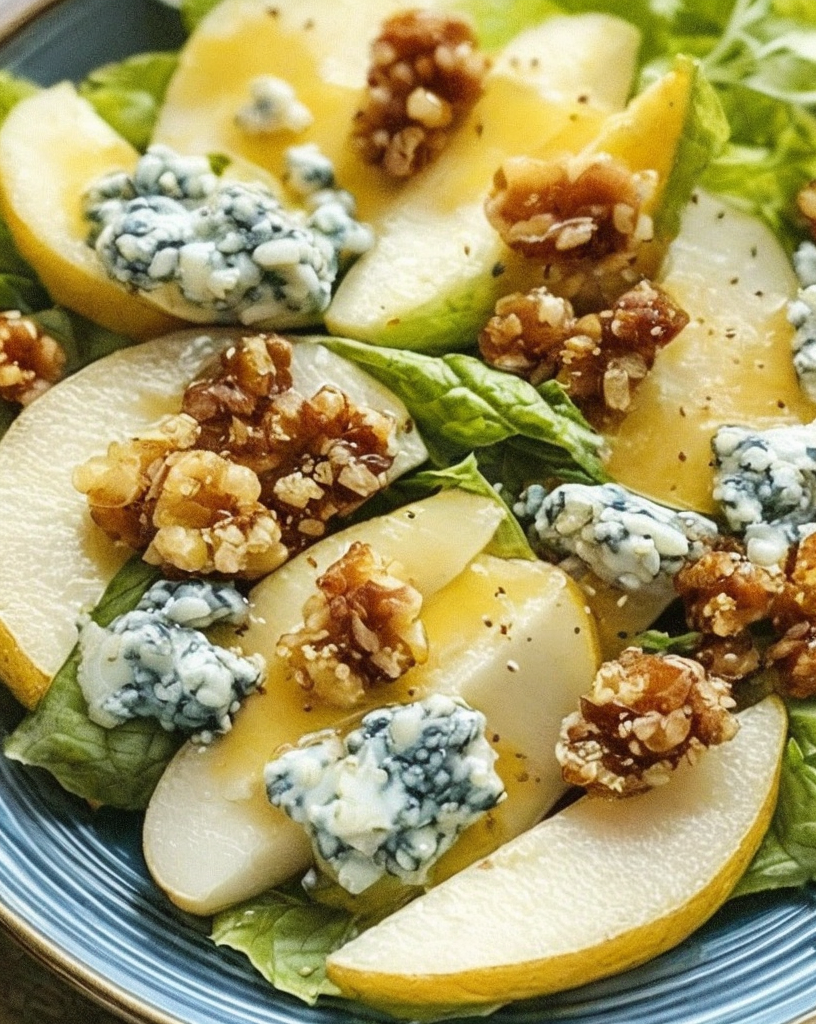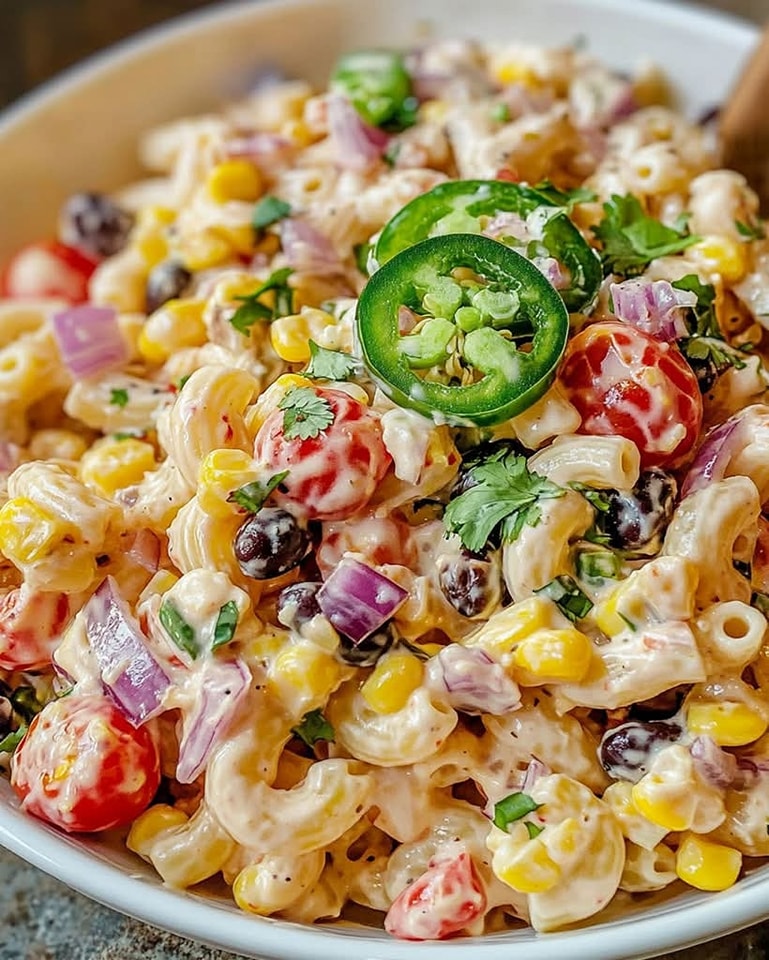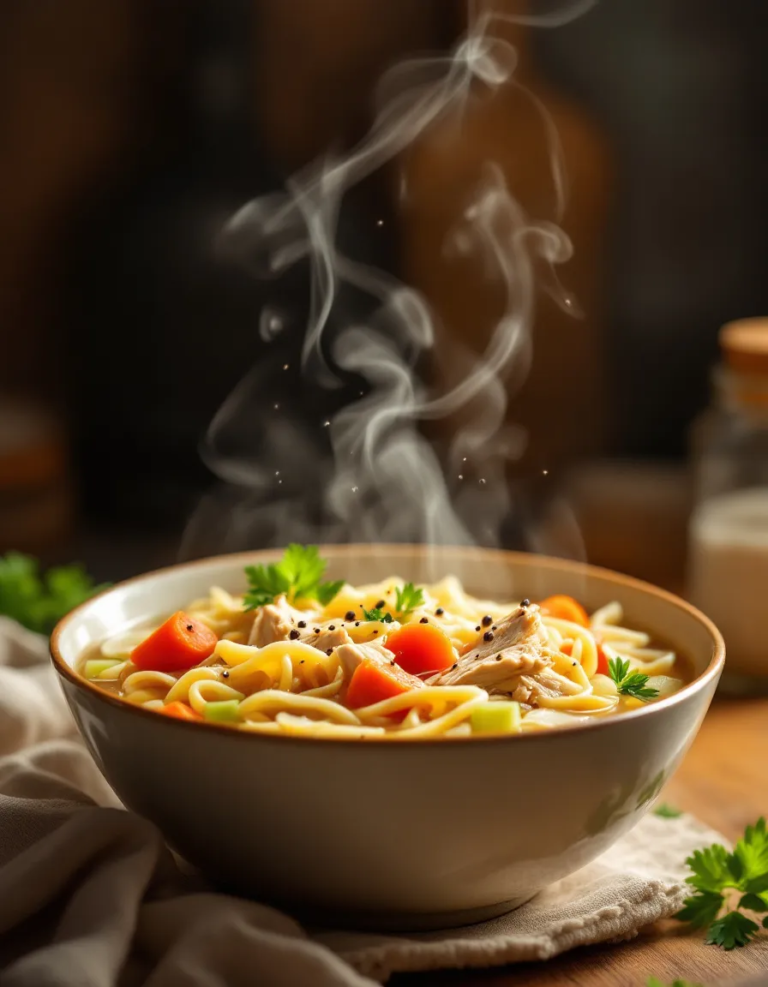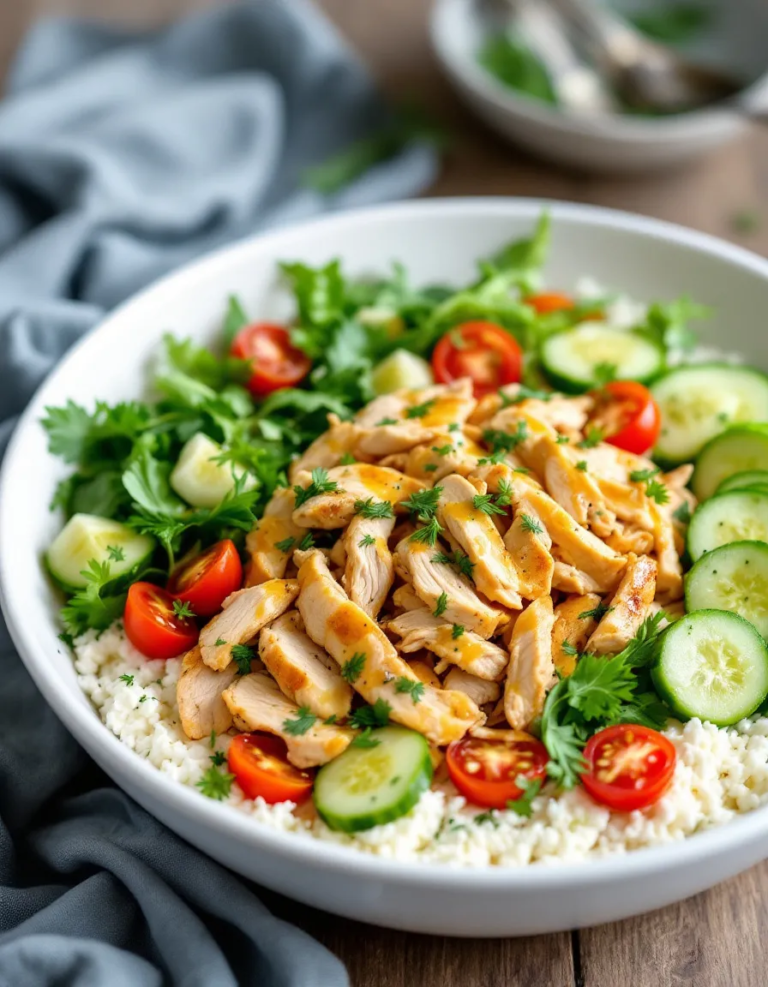Classic Pear and Blue Cheese Salad Recipe – Ready in 30 Minutes
Barefoot Contessa Pear and Blue Cheese Salad: A Gourmet Delight
Imagine a crisp bite of sweet pear harmonized with the robust flavors of blue cheese, all balanced perfectly in a refreshing salad. The Barefoot Contessa Pear and Blue Cheese Salad is not just a dish; it’s an exploration of flavors that tease the senses with each bite. This gourmet salad recipe offers a delightful combination of sweet, tangy, and creamy tastes, ideal for those looking to impress without stress.
The interplay of textures—from the soft, juicy pears to the creamy blue cheese crumbles—creates a salad experience that is both satisfying and exciting. Perfectly complemented by crunchy walnuts and the subtle zing of a vinaigrette, this salad serves as an exemplary appetizer or a vibrant centerpiece for a light meal. The ease of preparation ensures that even novice cooks can master this recipe, making it a staple for both intimate gatherings and festive feasts.
Quick Recipe Highlights
- Flavor Profile: Sweet pears contrast beautifully with the tang of blue cheese, finishing with the subtle saltiness of toasted walnuts.
- Texture: The dish offers a perfect mixture of creamy, crunchy, and juicy elements that dance on the palate.
- Aroma: The nutty aroma of walnuts coupled with the distinct zing of blue cheese makes this salad a fragrant delight.
- Visual Appeal: Vibrant greens entwine with the speckled blue of cheese and the soft gold of pear slices, creating a feast for the eyes.
- Skill Level Needed: Simple techniques make it accessible yet the flavors and presentation make it artful.
- Special Equipment: All you need are a sharp knife, a whisk, and a salad spinner.
Recipe Overview
- Difficulty Level: Easy enough for beginners yet impressive enough for skilled cooks, making it perfect for quick yet elegant meals.
- Category: Classified under salads and appetizers, it can also serve as a light main course when paired with protein.
- Cuisine: Drawing from European influences, this salad brings together elements often found in gourmet cuisine.
- Cost: Reasonable, as it utilizes common ingredients like walnuts and pears, with blue cheese providing a touch of luxury.
- Season: Best in fall when pears are in peak season, but it’s a versatile choice year-round with ingredient substitutions.
- Occasion: Suitable for every occasion from family dinners to holiday gatherings, offering both simplicity and sophistication.
Why You’ll Love This Recipe
Indulge in the diverse taste and texture this recipe offers. The sweetness of the pears balances the hearty richness of the blue cheese, while the walnuts add a crunchy contrast. Each forkful provides a unique experience, making every bite a pleasure.
The convenience of this salad is unparalleled. With just twenty minutes needed for preparation, it’s perfect for on-the-go meals or as a quick gourmet side dish during a busy week. It’s simple enough for everyday dinners yet elegant enough for entertaining guests.
The salad’s nutritional profile makes it more than just a treat—it’s a healthy choice. Packed with fiber, vitamins, and healthy fats, it supports wellness while delivering exquisite flavors. It offers a filling meal without heaviness, ideal for health-conscious individuals.
Socially, this dish shines at gatherings, easy to prepare in advance or serve fresh. Whether hosting a formal dinner or enjoying a casual brunch, its simplicity paired with a complex flavor profile makes it a conversation starter and a sure crowd-pleaser.
Despite its gourmet feel, this salad is incredibly cost-effective. By utilizing ingredients that can be found fresh and in season, it ensures quality without breaking the bank. Additionally, substitutions can be easily made without sacrificing taste, allowing for flexibility based on what’s available.
Historical Background and Cultural Significance
The infusion of pears with blue cheese is a classic pairing rooted in traditional European cuisine, where fruit and cheese combinations date back centuries. This duo is celebrated for its harmonious blend of flavors, often featured in rustic French and Italian fare.
Culturally, this salad represents the melding of simple yet high-quality ingredients often emphasized in European culinary practices, showcasing the art of letting natural flavors shine rather than masking them with complex techniques.
Over time, recipes like these have evolved, adapting to modern sensibilities and shifting tastes. Today, they are celebrated for their versatility in combining a variety of textures and flavors, easy to modify with seasonal and local produce.
Regional adaptations might include the use of local cheeses or nuts, reflecting the diverse agriculture and food traditions that contribute to its universal appeal. This salad not only embraces varied ingredients but also honors the cultural importance of fresh, wholesome produce.
Ingredient Deep Dive
Pears, the main star of this salad, have a rich history of cultivation, celebrated both for their sweet juiciness and abundant availability. Nutritionally, pears provide a good source of fiber and vitamin C, crucial for maintaining digestive and immune health.
When selecting pears, choose firm yet yielding fruits, indicating ripeness. Bartlett or Anjou pears work particularly well in salads for their buttery textures. Store pears at room temperature until ripe, then refrigerate to extend their shelf life.
Blue cheese, with its striking marbled appearance, has long been valued for its robust flavor. Nutritionally dense, it is an excellent source of calcium and vitamin K, though it may be calorically rich. Selecting high-quality blue cheese ensures a smooth creaminess.
Store blue cheese wrapped in parchment paper within an airtight container in the fridge. For those needing a milder alternative, swap with feta or goat cheese. This subtle change if necessary will not sacrifice the essence of the dish.
Common Mistakes to Avoid
Essential Techniques
Master the art of pear slicing. A sharp knife allows for thin, even slices that not only look professional but ensure a consistent flavor distribution. Pay attention to removing all seeds and core bits to maintain the salad’s delicate texture.
Learning to properly emulsify the dressing is key. Slowly whisk olive oil into the vinegar base, creating a creamy yet light vinaigrette that coats gently, avoiding any separation that can lead to acidic bites.
Toasting walnuts brings out a deep, rich nuttiness. Spread them evenly on a baking sheet and bake at a low temperature until golden. This step enhances both flavor and crunch, transforming your salad from good to gourmet.
Building flavors layer by layer is crucial. Start with a base of greens, adding pears, cheese, and nuts gradually. Toss gently to combine, ensuring that every ingredient is evenly distributed and seasoned, maintaining beauty in the presentation.
Pro Tips for Perfect Barefoot Contessa Pear and Blue Cheese Salad
– Select ripe pears to achieve the best sweetness, enhancing every layer of flavor in the salad.
– Use a mandoline slicer for consistently thin slices, giving your salad a professional finish.
– Chill your blue cheese in the freezer slightly for cleaner crumbles.
– Toast walnuts just before serving to maximize aroma and crunch.
– Experiment with different varieties of blue cheese for contrasting taste and texture.
– Dress the salad just prior to serving for the freshest and most vibrant presentation.
– Consider adding a hint of honey to the dressing to balance the tangy cheese.
– Allow the cheese to come to room temperature to heighten its creamy texture and flavor profile.
Variations and Adaptations
Regional variations might include the use of locally sourced cheeses, such as gorgonzola or Roquefort, each providing a unique flavor twist and texture. You can easily adapt the salad for different seasons by introducing winter greens or early spring vegetables like radishes.
For those seeking dietary modifications, swap out blue cheese with a vegan cheese alternative to make it suitable for vegans, or omit the cheese entirely while adding more nuts for a similar savory profile.
Flavor variations can be explored by introducing additional fruits such as figs or apples for different taste dimensions. A pinch of cayenne in the dressing can add a subtle heat contrast to the sweetness of the pears.
When considering texture modifications, adding grilled chicken or shrimp can transform it into a heartier main dish, providing a satisfying protein boost. A sprinkle of pomegranate seeds can provide a burst of color and crunch.
In presentation, using a ring mold to stack the salad can give height and definition, making it an elegant plated dish. Experiment with using deep platters to showcase the colorful array of ingredients.
Serving and Presentation Guide
Let your salad shine with careful plating techniques—layer ingredients to add height and dimension. Begin with a base of fresh greens, then artfully arrange sliced pears and scatter the cheese and walnuts on top.
Garnishing with fresh herbs such as thyme or parsley can add a touch of greenery while enhancing aroma and providing a vibrant visual note. For a rustic touch, serve the salad in a wooden bowl for an earthy presentation.
Traditional accompaniments might include a slice of crusty bread or a side of grissini, adding a crunchy counterpoint and complementing the creamy components of the dish. Modern pairings could include a soup starter, creating a balanced meal.
Temperature is key; serve your salad chilled but not too cold to maintain maximum flavor expression. For portion control, consider individual salad plates to prevent over-serving and maintain the integrity of the beautifully arranged components.
Wine and Beverage Pairing
Enhance your dining experience with a crisp white wine, such as a Sauvignon Blanc or a lightly oaked Chardonnay. These selections offer a bright acidity that complements the sweetness of the pears and cuts through the richness of the cheese.
For non-alcoholic alternatives, a sparkling water infused with a hint of lemon or apple can lend a refreshing contrast and cleanse the palate between bites, highlighting the salad’s diverse flavors.
Coffee and tea pairings are less conventional but can work with a light, floral tea complementing the cheese and fruit duo. Serve chilled in summer or hot in cooler months to harmonize with the refreshing elements.
Consider the serving suggestions—use elegant stemware for wine to elevate the meal, or opt for simple, clear glassware for sparkling water, ensuring the visual appeal reflects the delicacy of the dish.
Storage and Shelf Life
For best freshness, store any leftover dressed salad in an airtight container in the refrigerator and consume within a day. Undressed components can be stored separately for 3-4 days to maintain peak quality.
Maintain specific temperature requirements by keeping the components chilled but never frozen, as freezing affects both texture and flavor, particularly of the pears and cheese.
Choose glass containers for storage wherever possible to prevent cross-flavors with other refrigerator items. These also provide a clear view, reducing the chance of forgetting leftovers.
Watch for signs of spoilage such as browning of pears or an off smell from cheese. If these occur, discard immediately to maintain health safety.
Reheating is unnecessary for salad, but if cold-sensitive, allow leftovers to come to room temperature before serving to renew flavor intensity.
Make Ahead Strategies
Plan your prep timeline by slicing pears shortly before serving to maintain color and prevent browning. Prepare your dressing in advance to allow flavors to meld, enhancing the salad’s final taste.
When storing components between steps, keep nuts and cheese separate to avoid sogginess. This allows each ingredient to retain its intended texture until final assembly.
Assess the quality impact when planning to make ahead. While the dressing flavors improve over time, pears and greens are best prepped fresh. Assemble components as close to serving time as possible.
Assembly tips include using a large bowl for easy mixing without crushing ingredients. When ready to serve, toss the salad gently to integrate ingredients evenly without compromising the visual appeal or structure.
If reheating nuts or warming cheese melts are necessary, maintain low temperatures to gently enhance flavors without altering core salad components. Fresh elements like herbs should always be added last, preserving their vibrancy.
Scaling Instructions
Scaling your recipe by halving it maintains a perfect balance for small gatherings. If doubling or tripling, ensure to adjust seasoning and dressing proportions precisely for each increased serving to maintain flavor integrity.
For equipment adjustments in larger batches, consider using prep bowls for garnishes and an oversized salad bowl for mixing to ensure even coating and presentation.
Be aware of timing modifications—larger quantities may slightly increase prep time for slicing and toasting nuts, but core steps remain consistent.
When scaling up, consider storage considerations, utilizing wide, shallow containers to avoid crushing ingredients when storing. This also limits oxidation, keeping produce fresh longer.
Nutritional Deep Dive
Break down the macro elements—high fiber content from pears and walnuts balances helpful fats from cheese and nuts, making it heart-healthy when consumed in moderation.
Micronutrient additions such as vitamin C from the fruit and calcium from the cheese support overall health structure, benefiting immune and bone health respectively.
Emphasize health benefits by noting the heart-healthy fats in nuts and the absence of processed sugars, making this a wholesome meal choice.
Portion analysis reveals a balanced dish, offering generous servings without overconsumption of calories, supporting weight maintenance as part of an overall balanced diet.
For weight management tips, suggest limiting additional fatty components for a lower-calorie version, substituting blue cheese for a lighter variant like feta to control calorie intake.
Dietary Adaptations
For a gluten-free variation, focus remains on ensuring all accompanying components, such as bread or crackers, match those dietary requirements, keeping the salad inherently gluten-free.
A dairy-free transition involves substituting blue cheese with a rich, nut-based cheese or a hard cheese alternative often favored in specialty markets.
Adapting into a vegan diet demands replacing cheese altogether with nuts full of umami, such as toasted pine nuts or a tofu-based mixture for creaminess.
Lowering carbs can be as easy as adding leafy greens and replacing pears with more low-carb fruits or vegetables, adhering to a ketogenic lifestyle.
Opt for a paleo version by incorporating more nuts or seeds instead of cheese to align with protein-heavy meal preferences, emphasizing unprocessed foods.
A low-FODMAP modification may limit the cheese or incorporate substitutes free of complex sugars, enhancing digestive comfort while maintaining flavor.
The Recipe
Barefoot Contessa Pear and Blue Cheese Salad
Serves: 4
Prep Time: 20 mins
Cook Time: 0 mins
Total Time: 20 mins
Kitchen Equipment Needed
- Sharp knife
- Whisk
- Salad spinner
- Large salad bowl
Ingredients
- 2 ripe pears, thinly sliced
- 1/2 cup blue cheese crumbles
- 1/2 cup toasted walnuts
- 6 cups mixed greens
- 1/4 cup olive oil
- 2 tablespoons white wine vinegar
- 1 tablespoon honey
- Salt and pepper to taste
Directions
- In a small bowl, whisk together the olive oil, vinegar, honey, salt, and pepper to make the dressing. Set aside.
- Place the mixed greens in a large bowl. Add the sliced pears, blue cheese crumbles, and toasted walnuts.
- Drizzle the dressing over the salad just before serving. Gently toss to combine, ensuring even coating of the dressing.
- Plate the salad appealingly and serve immediately for the best flavor and freshness.
Recipe Notes
- Substitute goat cheese for a milder flavor.
- Use pecans if walnuts are unavailable.
- Add a splash of lemon juice if pears are overly sweet.
Troubleshooting Guide
Should textures become limp, ensure greens are dried thoroughly and pears are freshly sliced. Crisp textures are key to success, avoiding prewash soaking whenever possible.
Enhance flavor balance if needed—should pairs lack sweetness, a touch of honey in the dressing may rectify sharp cheese tones.
Temperature holds significance in the taste profile. For cold-sensitive taste buds, allow mildly room-temperature salad service without losing freshness.
If lacking specific kitchen tools, improvising with everyday utensils ensures execution without loss of dish quality—sharp knives and open bowls assist in overcoming equipment challenges.
Ingredient substitutions arise when availability constraints affect cheese choices. Any mild-to-medium-cured cheese can provide a complementary profile with slight flavor adjustments.
Timing concerns lead to wilted greens if dressing too early. Ensure assembly aligns with serving schedule, enhancing freshness regardless of scheduling.
Recipe Success Stories
Feedback from the community highlights the salad’s adaptability, noting its universal appeal across palates and age groups. Flavor is widely praised as harmonious with simplicity contribution hailed as beneficial for amateurs and skilled cooks.
Readers have successfully modified this dish by incorporating local, fresh ingredients found in regional markets, showcasing seasonal availability without sacrificing quality or appeal.
Photo submissions share how inventive presentation, utilizing varied plattes and bowls emphasizes visual aspects, expanding sensory experience followers thoroughly enjoy.
Varied approaches regarding texture and flavor have been explored and refined season by season. Salads emerge reflective of creativity, achieving an unparalleled sense of individual customization and audience engagement.
Engaging with readers through social media amplifies a welcoming atmosphere for culinary experimentation. Sharing adaptations enriches the communal experience with valuable insights, inspiring each culinary journey embarked upon.
Frequently Asked Questions
How to keep pears from browning in the salad?
Pears can be coated with a light splash of lemon or lime juice after slicing. The acidic juice helps slow oxidation, keeping fruits vibrant longer.
Can I prepare the salad in advance?
Yes, prepare components separately and combine them right before serving. Dressing can be made a day ahead, with fruits sliced close to the service period.
Are there substitutes for blue cheese?
You may substitute with feta or goat cheese for a milder flavor. These alternatives also offer similar creamy textures, maintaining the salad’s structure.
What nuts are best for substituting walnuts?
Pecans, almonds, or even hazelnuts present excellent flavor alternatives. Toast each type to appreciate its distinct nutty essence within the dish.
Is this salad easy to make gluten-free?
Absolutely. The core ingredients are inherently gluten-free; just ensure any added components like croutons match dietary restrictions.
What other greens can be used?
Arugula, spinach, or kale work wonderfully, each offering unique characteristics and textures, with subtle flavor contrasts enhancing the overall result.
Can the salad be served warm?
While traditionally not served warm, ingredients like nuts or slight blue cheese melting might bring a welcome warmth to otherwise fresh elements.
How many servings does this recipe yield?
Designed to serve four comfortably, additional personalization serves to either enhance or decrease portion size, contingent upon additional ingredients or meal context.
What dressing variations can I attempt?
Consider combinations like balsamic vinegar or a honey mustard dressing for dynamic flavor undertones, providing diverse profiles tailored to preference.
Can I add protein to this salad?
Definitely! Grilled chicken or shrimp pairs beautifully, transforming your salad into a more substantial and fulfilling main course.
Additional Resources
For those looking to explore related recipes, consider our collection of gourmet salads for every occasion, catering to seasonal variations and regional preferences.
Technique guides offer insight into mastering essentials, honing slicing precision and dressing emulsification through step-by-step pictorials and video demonstrations.
Ingredient information will deepen your understanding and selection prowess when encountering unfamiliar produce or considering potential substitutions and enhancements.
Equipment recommendations simplify kitchen navigation, outlining essential tools necessary for optimizing your culinary endeavors no matter the scope.
Seasonal variations highlight ever-evolving produce choices, presenting opportunities to experience flavors at the peak of freshness, all while celebrating the beauty each season offers.
Join the Conversation
Let’s connect over shared culinary passions. Share photos on Instagram or Pinterest using our branded tags, showcasing your unique interpretations and presentations, fostering a vibrant exchange of techniques and aesthetics.
Leave a review and engage with our comment sections—your feedback not only enriches the community but allows future culinary lovers to embrace modifications and suggestions.
We invite you to delve into the vibrant culinary community surrounding our website. Explore reader-contributed tips, photography showcases, and engage in discussions promoting the exchange of ideas and inspirations.
When experiencing any culinary success or having a reader-submitted recipe lovingly crafted, our newsletter offers a platform to share in those triumphs, building community while performing culinary artistry.
Double down on community engagement, uploading variations or adaptations tried to our social media channels. Your inventive suggestions offer explorers newer culinary flights of fancy, inviting interpersonal connection and shared achievement.
Expand your culinary journey with our interactive forums, fostering the exchange of inspiration, tips, and shared success, enriching your cooking repertoire while forming lasting friendships.







